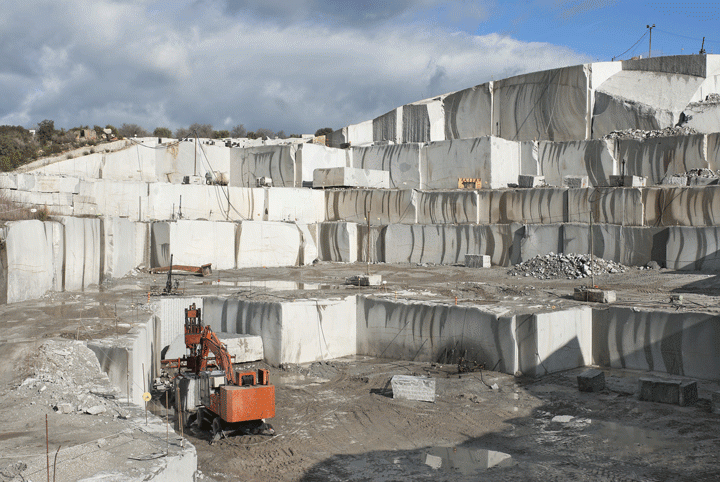Unveiling Granite Quarries in South Africa Legacy: A Journey With Quarries
Unveiling Granite Quarries in South Africa Legacy: A Journey With Quarries
Blog Article
Discovering the Rich Background and Sustainable Practices of Granite Quarrying
As we base on the precipice of uncovering the detailed tapestry of granite quarrying, a journey via time reveals not just the physical act of drawing out stone but also the social and historic significance woven into the very material of this technique. From the old origins that laid the foundation for modern quarrying strategies to the sustainable practices that are forming the future of this sector, each sculpt mark on granite surface areas tells a story waiting to be uncovered (granite quarries in south africa). The legacy of granite quarrying extends much beyond mere removal; it is a testimony to human resourcefulness, durability, and the long-lasting allure of this magnificent stone
Ancient Beginnings of Granite Quarrying
Dating back to old civilizations, the method of quarrying granite has actually been an important component of human background and architectural innovation. The earliest evidence of granite quarrying days back to ancient Egypt, where large pyramids and elaborate sculptures were crafted from this sturdy rock. The Egyptians utilized primitive tools to extract granite blocks from quarries, showcasing the significance of this product in their huge constructions.
Relocating ahead in background, the Greeks additionally made considerable contributions to the quarrying of granite. The Greeks used granite in different building wonders, such as temples and sculptures, showing their ability in shaping and carving this sturdy stone. The Romans further improved the methods of quarrying granite, utilizing advanced devices like chisels and hammers to remove and form granite for their legendary frameworks.
Via the centuries, the technique of quarrying granite has actually advanced, with modern-day innovations improving effectiveness while maintaining the timeless allure of this all-natural stone - granite quarries in south africa. From ancient civilizations to modern home builders, the tradition of granite quarrying continues to shape our globe
Development of Quarrying Methods
The evolution of quarrying techniques has actually been marked by a continuous progression in the direction of higher efficiency and accuracy in drawing out granite. From the rudimentary techniques employed by our forefathers to the advanced technologies made use of in contemporary quarrying procedures, the market has actually gone through significant advancements. Early quarrying methods involved hand-operated labor with fundamental devices such as blades, hammers, and wedges to remove granite blocks from the earth. As human beings advanced, strategies like fire-setting and primitive dynamites were presented to help with the removal process.
Improvements in computer-controlled devices and i loved this 3D modeling have optimized quarrying operations, leading to minimal ecological influence and enhanced sustainability methods. As the demand for granite proceeds to climb, the development of quarrying methods remains integral to conference market needs successfully and sustainably.
Social Relevance of Granite
Granite holds a profound social importance throughout various people due to its long-lasting presence in building work of arts and revered monuments. The social significance of granite prolongs past its physical attributes; it symbolizes strength, security, and timelessness, making it an icon of withstanding legacies and traditions.

Sustainable Practices in Quarrying
In the middle of the abundant background of granite quarrying and its social significance lies a growing focus on lasting techniques within the industry. As environmental awareness and worries concerning source deficiency have actually heightened worldwide, the quarrying market has actually significantly accepted sustainable methods to reduce its influence on the atmosphere and bordering areas.

Moreover, recovery and rehabilitation of quarry sites post-extraction are essential to lasting methods. By recovering quarried locations to a natural or advantageous state, such as producing wild animals environments or entertainment rooms, quarriers can counter the ecological footprint of their operations and add favorably to the local environment.
Heritage of Granite Quarrying
With a historic backdrop soaked in workmanship and industrial progress, what withstanding influence has granite quarrying left on the landscape of modern-day culture? The tradition of granite quarrying goes beyond simple removal techniques; it has actually shaped architectural wonders, my website city landscapes, and social heritage worldwide. The resilient nature of granite has actually made it a preferred choice for monuments, buildings, and facilities, standing as a testimony to the skill and artistry of quarry workers throughout generations.
In addition, the financial footprint of granite quarrying can not be neglected. The industry proceeds to supply job opportunity and drive local economies in areas where granite extraction prevails. It has actually likewise spurred technical innovations in quarrying strategies and devices, leading to extra effective and sustainable techniques.
In terms of sustainability, the heritage of granite quarrying includes efforts to minimize environmental effects through improvement tasks and responsible resource monitoring. By balancing economic passions with environmental stewardship, the sector aims to make certain that future generations can remain to take advantage of this long-lasting natural deposit.
Final Thought

Report this page